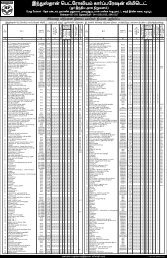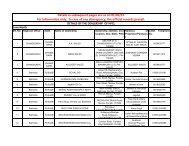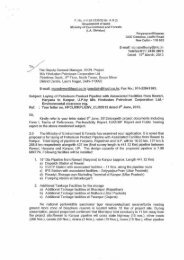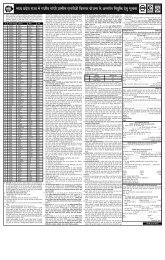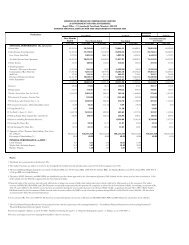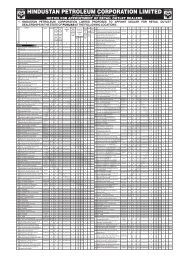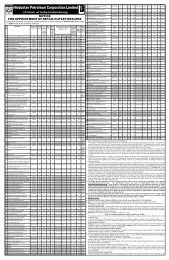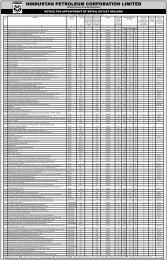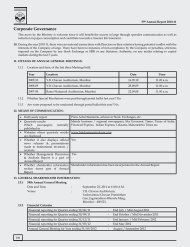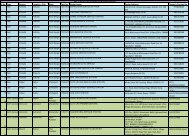HP Bitumen Handbook - Hindustan Petroleum Corporation Limited
HP Bitumen Handbook - Hindustan Petroleum Corporation Limited
HP Bitumen Handbook - Hindustan Petroleum Corporation Limited
Create successful ePaper yourself
Turn your PDF publications into a flip-book with our unique Google optimized e-Paper software.
6. tests for vg grade bitumen<br />
6.1.4 Penetration Index or Penetration Ratio<br />
The penetration of the same sample of bitumen can be measured at different<br />
temperatures and a temperature vs penetration graph can be plotted on a log log<br />
graph sheet. The graph is a straight line and the slope of this straight line is<br />
called the penetration index. Penetration index can also be calculated with the<br />
help of the following formula:<br />
Penetration index is a fair indicator of the ability of bitumen to resist repeated<br />
variations in the temperature of the pavement. Penetration ratio is a simplified<br />
version of the Penetration Indext. It is very similar to penetration index but in this<br />
case the sample is tested with 100 gm weight on the needle at 25 O C and 200gm<br />
weight on the needle at 4 O C. While deriving the values of Penetration Index and<br />
Penetration Ratio the assumption is that the properties of bitumen vary in a linear<br />
manner over the entire range of temperature (in service as well during<br />
application. However, this assumption may not be entirely true in case of certain<br />
bitumen or modified bitumens.<br />
6.1.5 Matter Soluble in Organic Solvents<br />
This test measures the presence of inorganic impurities in bitumen. Solvents like<br />
trichloroethylene, carbon disulphide, carbon tetrachloride, toluene, etc. are used<br />
for this purpose. In this test bitumen is dissolved in the solvent (trichloroehylene,<br />
carbon disulphide, carbon tetrachloride or toluene) and the material insoluble in<br />
the solvent is filtered out. It is then repeatedly washed with the solvent to<br />
remove all soluble matter. The insoluble matter that is finally left behind is<br />
weighed and the percentage calculated. The choice of solvent has been a<br />
matter of debate and discussion in the scientific community. Some of these<br />
solvents are considered to be toxic and hazardous. The laboratories and test<br />
method specification making bodies prefer not to use these toxic solvents and<br />
have switched over to less toxic or non-toxic solvents.<br />
12



